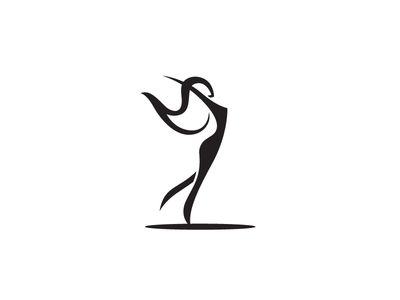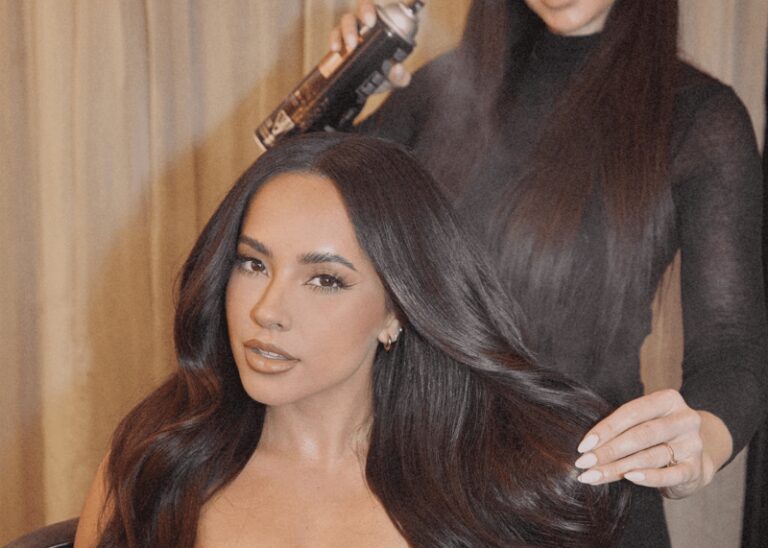Contents
Safe Practices Alternatives The Final Takeaway
Hairspray can sometimes feel like a bit of a miracle product with its ability to handle many different jobs. It tames flyaways, adds volume, and keeps your hairstyle in place for hours on end. But as with any product out there (and especially one you use regularly), you may be wondering: Is hairspray bad for your hair?
That's a fair question to ask considering the product sometimes makes your hair feel hard to the touch. But luckily, according to two experts, hairspray generally isn't problematic when used in moderation. That said, there are a few key factors you should keep in mind to make sure your hair and scalp stay healthy. Below, a hairstylist and board-certified dermatologist weigh in on hairspray's potential impact on your hair and scalp and how to use it in your routine safely.
How Hairspray Works
A big reason why hairspray is so effective at keeping strands just the way you want them is because it contains polymers that work hard to get the job done. Within a hairspray product, the polymers are dissolved in a solvent, like water or alcohol. When you spray the product in your hair, the solvent evaporates, leaving behind a film of polymers that bind different strands of hair together and hold your hair in place. "When you spray it on, the liquid quickly evaporates, leaving behind this film," says Dawna Jarvis, a professional hairstylist.
The Different Types of Hairsprays
- Aerosol: “These give a fine, even mist and are great for all-over hold,” Jarvis says. This is generally how a typical hairspray bottle will work.
- Non-Aerosol Pump Sprays: “These are more eco-friendly and often provide a stronger hold,” Jarvis says. “[Non-aerosol pump sprays] were very popular in the 80’s and 90’s.” However, we are seeing more and more brands bring this format back for better environmental standards and higher quality hold.
- Dry Texture Sprays: “These add volume and texture along with light hold,” says Jarvis. “Dry texture sprays do not give a stiff hold like traditional hairsprays.” Generally, people reach for this type of product to create more tousled or undone looks.
Is Hairspray Bad for Your Hair?
“In moderation, hairspray is not bad for your hair,” says May Hall, a double board-certified dermatologist at Jennie Stuart Dermatology. “However, if used excessively or too frequently it can damage or weaken your hair strands.” She explains that many hairsprays are formulated with alcohol-based ingredients. This is what helps them dry quickly, but can also cause problems like dry hair or a dry scalp, especially if they’re used frequently. “Repetitive use can make your hair brittle and dry,” says Hall. “The alcohol contained in hairspray can also bind to oils on your scalp which can make you more prone to dandruff and buildup.”
Another problem you can run into with hairspray is the extra build-up that can occur if you don't wash your hair regularly. Jarvis notes that this can cause your hair to look dull or feel stiff. Combining heat and hairspray can also be problematic. "Overusing hot tools with hairspray is also damaging," she adds. "Think of all that built-up alcohol on your hair now being heated up by a hot tool. This can be bad for your color. When the hairspray is heated, it can leave a burnt-looking color, especially on blondes."
Click here to preview your posts with PRO themes ››
How to Safely Use Hairspray
Here are four tips for using hairspray in a way that's safer for your hair.
Watch How Often You're Using It
The first thing to keep in mind with hairspray is to use it sparingly. Experts share that a light mist is often enough, especially with firm-hold sprays. This will save your hair from sitting in any extra or unnecessary product. Use a small but intentional spritz!
Don't Hold the Canister Too Close to Your Hair
"When using hairspray, hold the canister a safe distance away from your scalp and spray only on your hair," suggests Hall. "Spray in a well-ventilated room and do not apply excessively." Jarvis recommends holding the canister about 10-12 inches away from your hair when spraying and avoiding direct contact with your scalp.
Try an Alcohol-Free Formula
If your hair tends to be dry, the last thing you want is to use a product that will only suck out more moisture. In this case, Jarvis suggests looking for alcohol-free formulas. But keep in mind they can take longer to dry post application.
Wash Your Hair
Don’t forget to wash your hair at the end of the day to remove any hairspray you applied earlier. “If you do have hairspray in your scalp or on your hair, be sure to wash it out with a gentle shampoo to avoid buildup,” Hall says. Additionally, you might consider using a clarifying shampoo once each week if you regularly use hairspray.
Alternatives to Hairspray
Should you want to opt out of using hairspray altogether, there are several other options that you can reach for. Just remember that every product might give slightly different results depending on your hair type.
- Non-Aerosol Hairspray: According to Hall, these offer hold without damaging your hair long-term.
- Dry Shampoo: “Dry shampoos can often restore volume to hair without the need for additional hairspray,” Hall says. This is especially good for situations where you want to only add extra lift at the roots.
- Texturizing Powders: According to Jarvis, texturizing powders are great at providing These volume and light hold. You can apply the powder directly only your hair with either a fluffy brush or puff.
- Styling Creams: For styles that require added definition and medium hold, Jarvis recommends styling creams. This is ideal for most hair types and works especially well for slicked-back styles.
- Sea Salt Sprays: While Jarvis points out that sea salt sprays won’t offer as much hold as a traditional hairspray, they can help you achieve a beachy texture.
The Final Takeaway
Hairspray generally isn't problematic when used in moderation. Otherwise, it can cause brittle hair, dry strands and scalp, and dull, stiff hair. You can also damage your hair if you apply heat after using hairspray. Beyond using hairspray in moderation, it's also important to hold the canister 10-12 inches from your hair while applying. Remember to wash the product from your hair at the end of each day. Lastly, consider using an alcohol-free hairspray if you're having issues with dry hair or a dry scalp.
If you're looking to swap your hairspray for something different, you might want to try dry shampoo, a styling cream or texturizing powder, salt spray, or a non-aerosol hairspray. Should you still have any questions or concerns about how hairspray is affecting your hair and scalp health, reach out to a board-certified dermatologist or hairstylist for more information.


